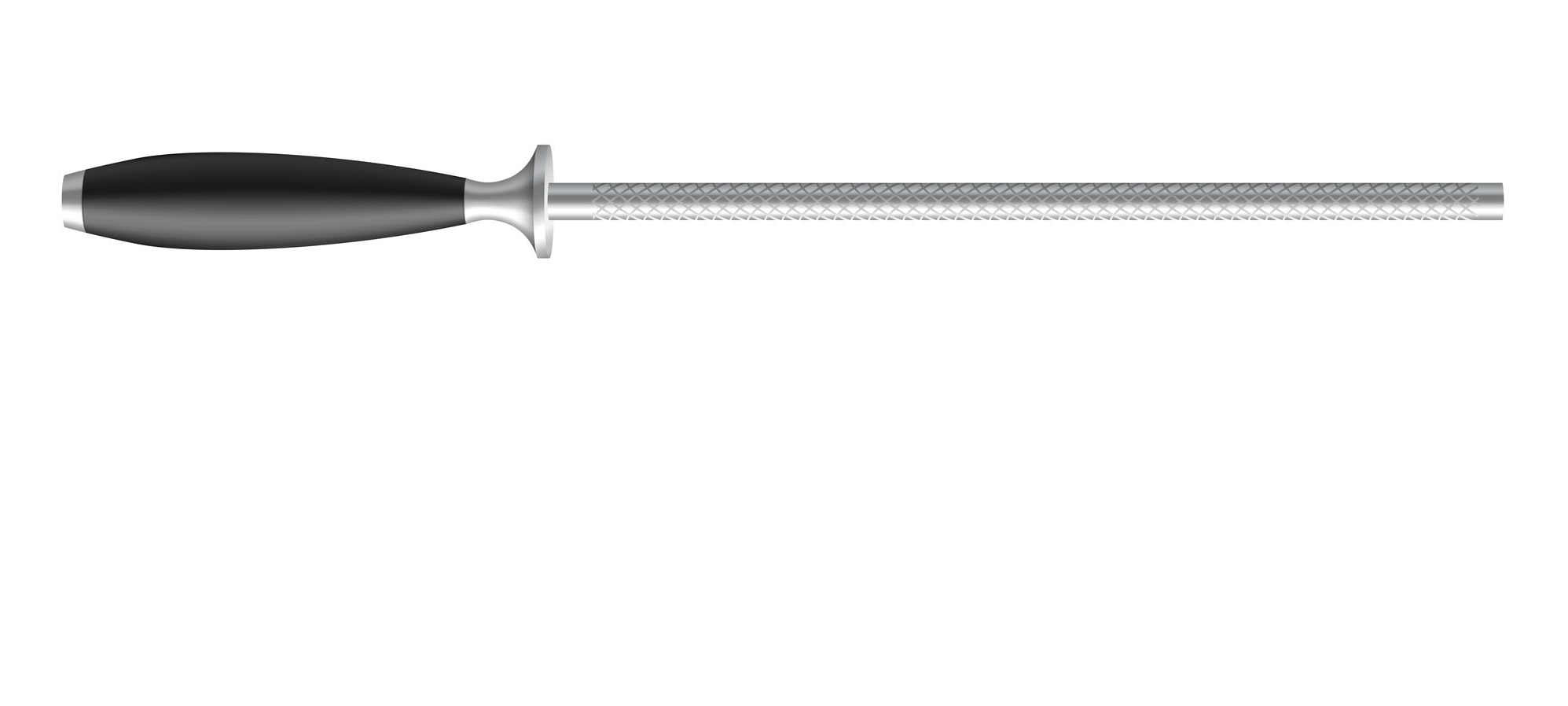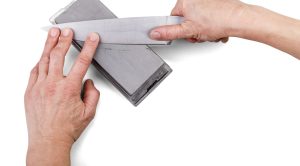A steel rod is often used to sharpen or hone the edge of a kitchen knife. It is a long steel rod with gradients of grain or patterns you swipe your blade against. It is essential to know there are two different types of rods. A honing rod reforms the edge of your blade without removing any materials. A sharpening rod sharpens the knife by removing materials and creating a new edge.
Learning how to test knife sharpness after using a steel rod can be accomplished with a tomato or other similar ingredient. The goal is to sharpen your blade from time to time to ensure it cuts as it should without you having to exert extra force and risk a slipped blade.
Is it Good to Sharpen a Knife with a Rod?
Yes, a sharpening rod is a great way to ensure a reliable edge for your kitchen knives. Honing is preferred over sharpening because you want to increase the longevity of your knives. Sharpening by itself will slowly remove materials from the blade. Other points to consider include:
Pros:
- Easy to use, set up, and learn to master.
- Relatively inexpensive, depending on the material (ceramic, diamond, etc.).
- Doesn’t remove too much material from your knife’s edge.
Cons:
- The angle is pretty well set, and the grain gradient is as well.
- More designed for edge maintenance than creating a new sharp angle.
- The best results come from better materials like diamond or ceramic rods.

Tools for the Job
Here are a few items you’ll need for sharpening a knife with a rod. These are in no particular order.
- Honing/Sharpening Rod
- Dull knives to be sharpened
- Microfiber cloth for cleaning
- Cutting board/kitchen towel
Steps to Use a Steel Rod for Sharpening
Most sharpening steel rods have a thick handle to grip, so you do not slip. We highly advise you use this, so you avoid any safety issues.
- Position the sharpening steel rod vertically over a cutting board or kitchen towel.
- Select the correct angle you wish to sharpen and hold your blade to that angle.
- Hold your knife like you would cut through meat, at about 20 degrees away from the steel, and swipe your knife (with a sweeping motion) across the steel with light to medium pressure. Don’t dig into the steel.
- Continue swiping from the heel to the tip about half a dozen times on each side of the blade (depending on the bevel).
- Clean off your blade and the sharpening steel with your cloth. You need to clean the steel rod because little micro-pieces of materials can build up and ruin the gradient over time.
Best Rod for Knife Sharpening
Now that you have a better idea of how to use a sharpening steel rod, we suggest you check out the Wusthof 10” Sharpening Steel. Starting with a ten-inch rod is perfect because it allows you to use practically any type of knife you would have in a home kitchen, from paring to chef’s knife. This is a great beginner’s rod because of the quality handle to avoid slippage and the magnetic fine grit steel that attracts any metal fibers, so it won’t end up in your ingredients.
Pros:
- Excellent length of steel rod for knife sharpening versatility.
- Fine grain for reforming and honing the blade more than creating a new edge from over-sharpening.
- Slip-resistant handle to avoid any accidents.
Cons:
- Not designed for really dull knives as this is a fine grit only.
- You may want to go to a 12” rod for 8” chef knives.
- Has a slight point at the end, which doesn’t lay as flat as you would like for stability.
Alternative Tools for Sharpening a Knife
A sharpening steel rod, especially one with a fine grit, is more for reforming the edge of a blade. If you want to sharpen an extremely dull kitchen knife, you may want to try other methods like a whetstone, electric or handheld sharpener, or even a Dremel tool. We recommend you avoid the Dremel as that can cause a lot of damage to your blade. You are better served with a whetstone with coarse grit for sharpening and then using the honing steel to work with ingredients as you cook.

Conclusion
A sharpening steel rod is an excellent resource for maintaining a sharp edge on your kitchen knives. You always want to cook, prep, and handle ingredients with a sharp knife, so there are no accidents from putting too much force on the knife or slipping because of the dullness. High reliability is possible with honing steel on hand. With a bit of practice, you should be able to integrate using a honing/sharpening steel rod into your regular cooking activities in no time.







Post Your Thoughts